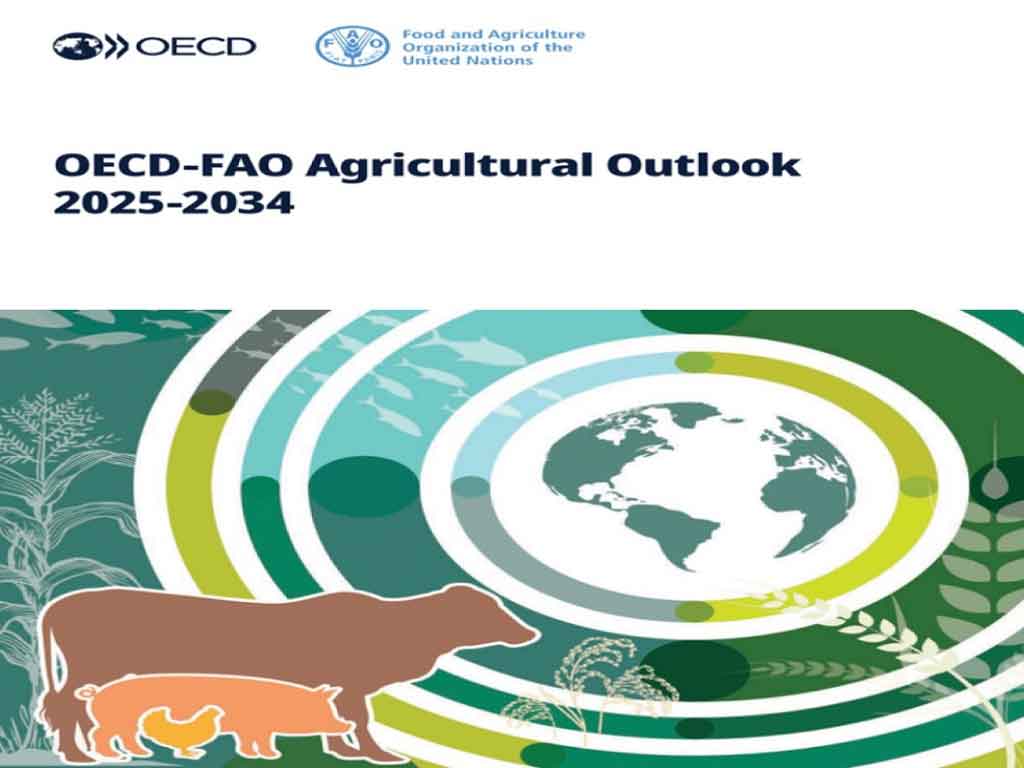The Food and Agriculture Organization of the United Nations (FAO) and the Organisation for Economic Co-operation and Development (OECD) today jointly released the *OECD-FAO Agricultural Outlook 2025-2034*.
The 21st edition of this analysis, disseminated by the FAO press office, projects that emerging economies will drive growth in the consumption and production of animal-sourced foods over the coming decade.
Global per capita caloric intake from livestock and fisheries products will rise by 6.0 percent during these ten years, primarily driven by rapid growth in low- and middle-income countries, where intake is projected to increase by 24.0 percentage points – nearly four times the global average.
Despite this increase in nutrient-dense food consumption raising average per capita intake to 364 kilocalories (kcal) daily in these nations, inequalities will persist. In low-income countries, intake is projected at only 143 kcal, below the 300 kcal benchmark for a healthy diet.
FAO Director-General Qu Dongyu stated: «These projections point to improved nutrition for many people in developing countries – a positive outcome that must be extended to those in the lowest-income nations.»
Global production of agricultural and fisheries products is projected to expand by approximately 14.0 percent by 2034, mainly driven by productivity gains in middle-income countries. However, this growth implies larger animal herds and expanded cropland areas.
While meat, dairy, and egg production are forecast to rise by 17.0 percent, total global inventories of cattle, sheep, pigs, and poultry will increase by only 7.0 percentage points.
World cereal production is expected to grow at an average annual rate of 1.1 percent between 2025 and 2034, driven by a 0.9 percentage point annual yield increase, despite harvested area expanding by just 0.14 percent.
By 2034, 40.0 percent of all cereals will be consumed directly by humans, just over one-third will be used for animal feed, with biofuels and other industrial uses accounting for the remainder.
OECD Secretary-General Mathias Cormann declared: «We have the tools to end hunger and boost global food security,» adding that the Outlook aims to «support policymakers worldwide in these efforts with our evidence-based data, analysis, and recommendations.»
This *OECD-FAO Agricultural Outlook 2025-2034* report is critically important, Cormann emphasised, as «well-coordinated policies are needed to keep global food markets open while fostering long-term productivity improvements and agricultural sector sustainability.»




